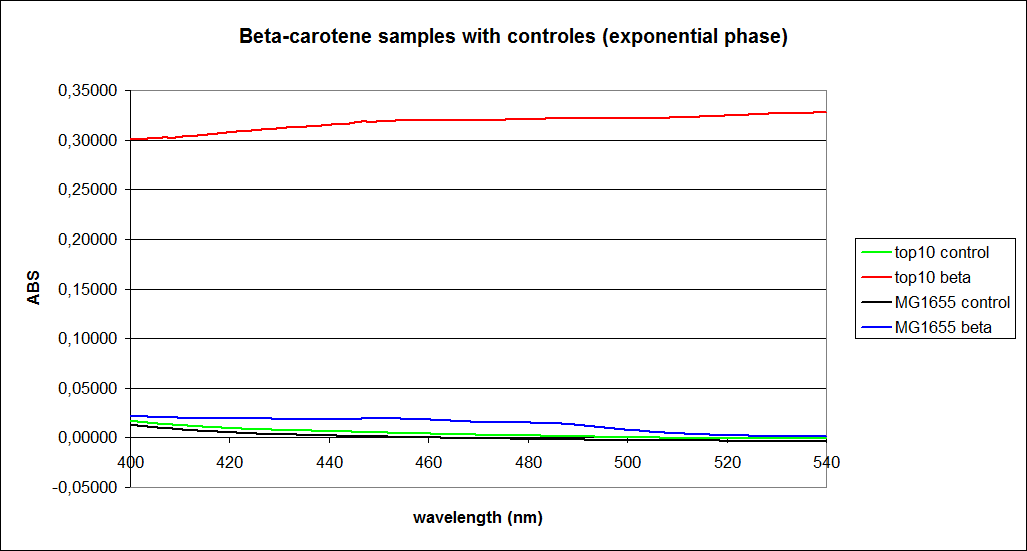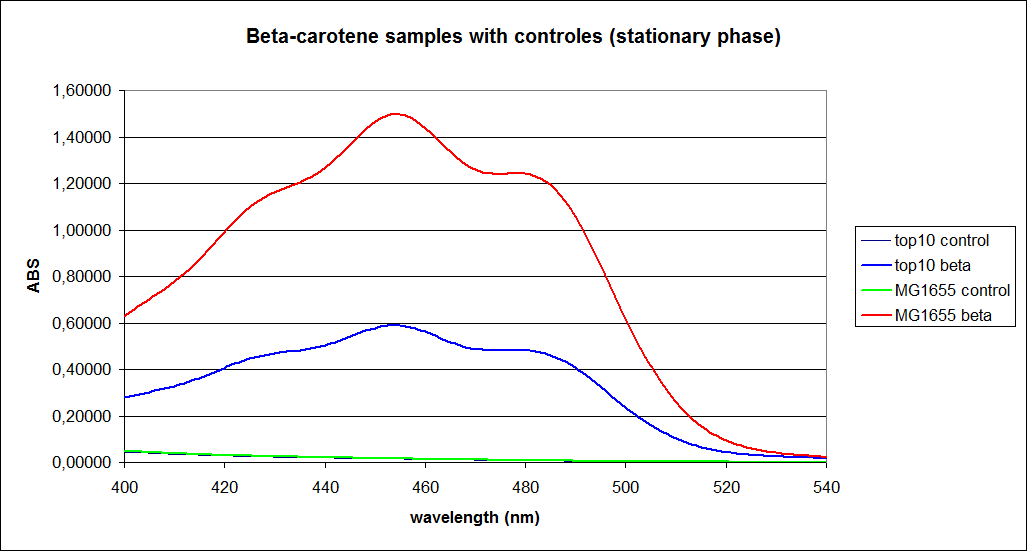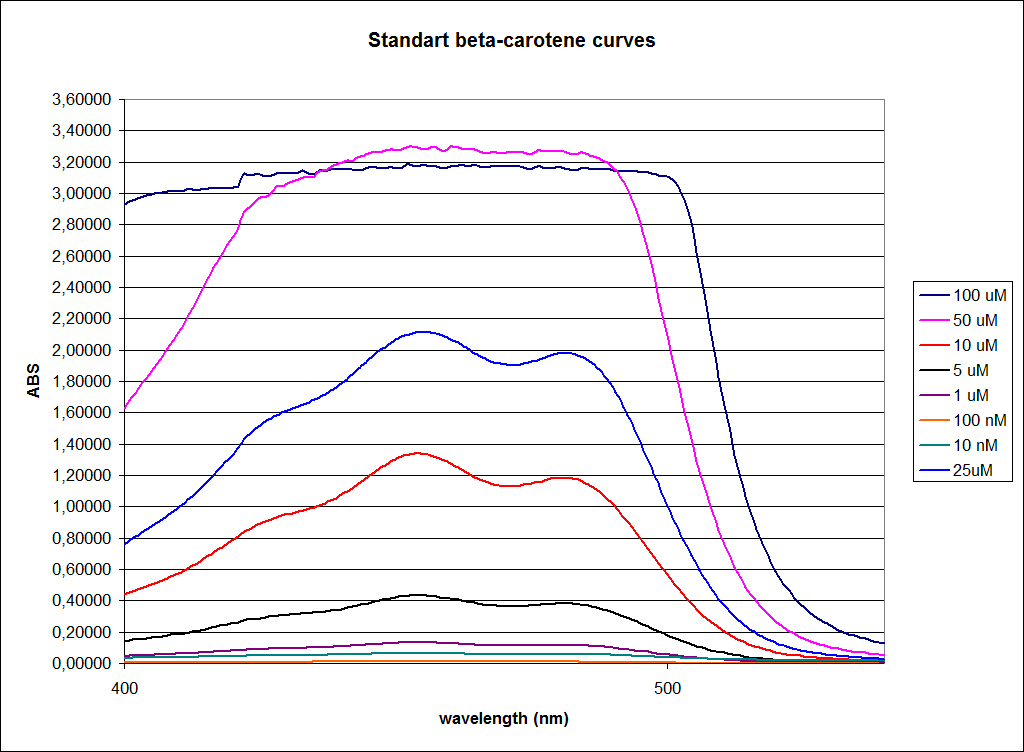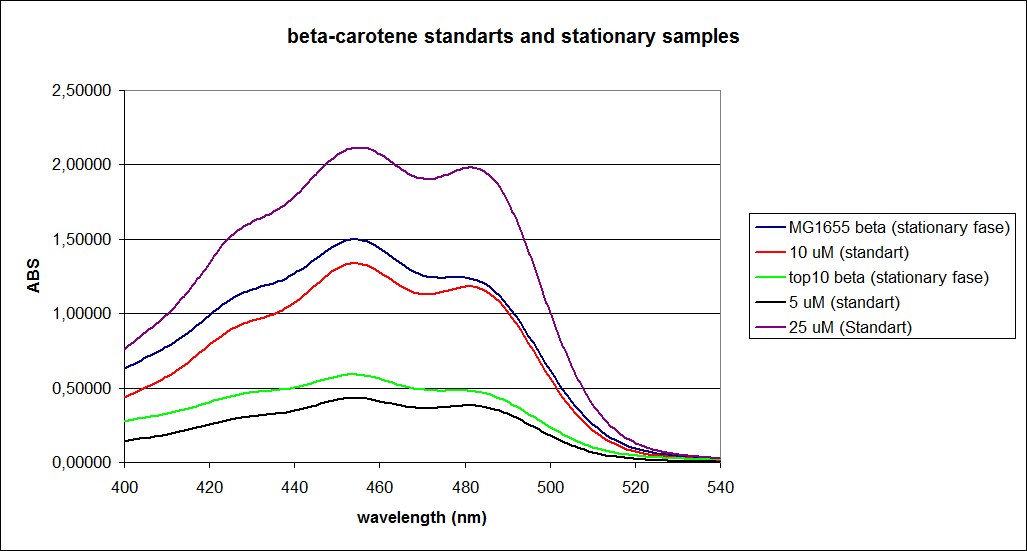Team:SDU-Denmark/Cambridge
From 2010.igem.org
Contents |
Characterizing an existing biobrick
2009 Cambridge brick K274210
The K274210 brick was cultivated from the 2010 kit plate 3 well N6 in the PSB1A2 plasmid and transformed into ‘’E. coli’’ strains TOP10 and MG1655.
Characterization
UV-vis determination of beta-carotene production
In this experiment cells were prepared and harvested according to protocol EX1.1. This experiment was performed with four different strains of E. coli:
Wild type TOP10
Wild type MG1655
TOP10/pSB1A2-K274210
MG1655/pSB1A2-K274210
TOP10/pSB1A2-K274210/pSB1C3-K343005
MG1655/pSB1A2-K274210/pSB1C3-K343005
K274210 were constitutively expressed.
The measurements were performed on cells both in the exponential and stationary phase. The resulting graphs are presented below:
In order to assess the results, a series of standard dilutions of beta-carotene were made. The concentrations were 1mM, 100 µM, 50 µM, 25 µM, 10 µM, 5 µM, 1 µM, 100 nM and 10 nM. The standard dilutions were also measured on the spectrophotometer. The resulting graphs are presented below:
When combining the graphs of the samples and the standard dilutions, it is clear that the spectra are uniform. This similarity of the spectra indicates that the cells actually do produce beta-carotene. The graphs also give a qualitative indication of the amount of beta-carotene produced by the MG1655 and the Top10 E. coli cells. The resulting graphs are presented below:
The graph shows that the beta-carotene production of TOP10 containing pSB1A2 with constitutively active K274210 produces beta-carotene in a concentration just above 5 µM.
The MG1655 containing pSB1A2 with constitutively active K274210 produces beta-carotene in a concentration just above 10 µM.
All data can be seen under
Raw data
The K274210 brick has also been characterized together with the K343005 and K343006 parts and the data are represented in the characterization for the K343005 and K343006 parts.
 "
"



